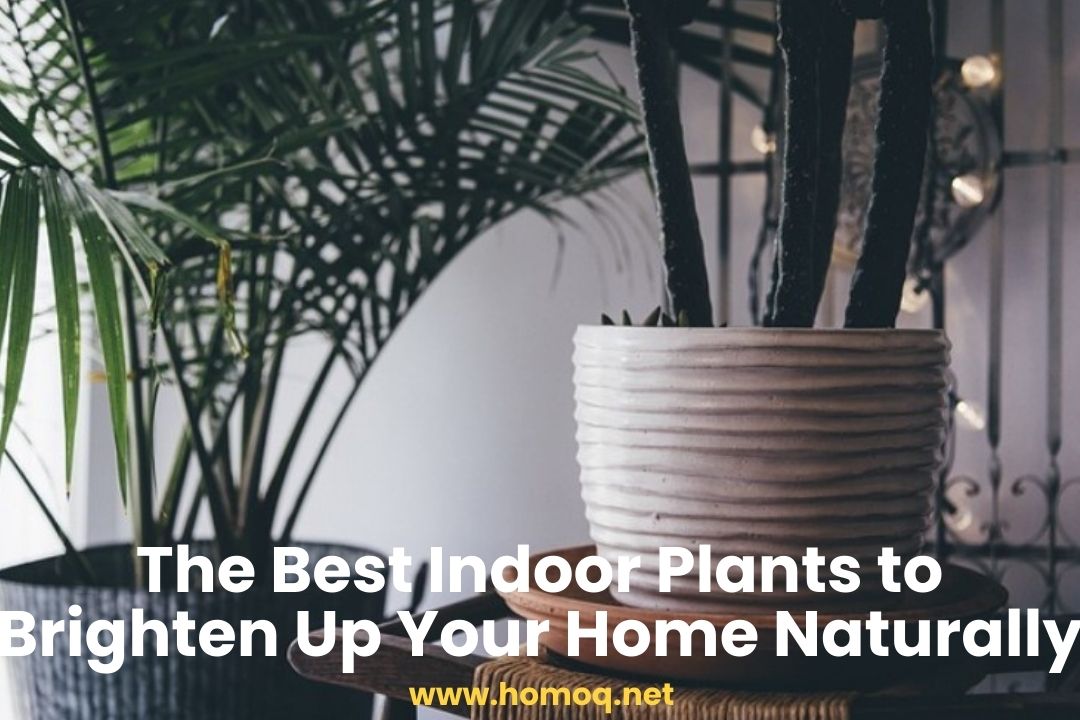Indoor plants enhance the aesthetics of your home, improve air quality, reduce stress, and create a refreshing atmosphere. Whether you’re a seasoned enthusiast or a beginner looking to add greenery to your space, there are plenty of options.
In this guide, we’ll explore the indoor plants that bring life to your home, their benefits, and how to care for them.
Why Indoor Plants Are a Must-Have for Every Home
Adding indoor plants to your living space offers multiple benefits beyond just decoration.
- Improves Air Quality – Many plants filter out toxins and release oxygen, making the air fresher and healthier.
- Boosts Mood and Reduces Stress – Studies show that greenery indoors promotes relaxation and enhances mental well-being.
- Enhances Humidity – Plants naturally increase moisture levels in the air, which can be beneficial during dry seasons.
- Aesthetic Appeal – Indoor plants bring color, texture, and life to your home decor.
- Encourages Productivity – Having greenery around has been linked to improved concentration and focus.
Top Indoor Plants to Brighten Up Your Home
1. Snake Plant (Sansevieria trifasciata)
Why it’s great:
- Low maintenance and requires minimal watering.
- Thrives in low light, making it perfect for bedrooms and offices.
- Filters toxins like formaldehyde and benzene from the air.
Care Tips:
- Water sparingly (every 2-3 weeks).
- Please place it in indirect light, but it tolerates low light.
2. Peace Lily (Spathiphyllum)
Why it’s great:
- Produit’s beautiful white flowers.
- Effective at removing indoor air pollutants.
- Requires minimal care.
Care Tips:
- Keep soil moist but not soggy.
- Thrives in indirect light with occasional direct sunlight.
3. Pothos (Epipremnum aureum)
Why it’s great:
- One of the easiest plants to grow indoors.
- It can be placed in hanging baskets or on shelves.
- Helps remove indoor toxins like carbon monoxide.
Care Tips:
- Water when the top inch of soil is dry.
- Thrives in low to bright indirect light.
4. ZZ Plant (Zamioculcas zamiifolia)
Why it’s great:
- Extreit’s resilient and drought-tolerant.
- Ideal for beginners or people who travel often.
- Adds a stylish, modern look to interiors.
Care Tips:
- Water only when the soil is dry.
- Prefers indirect light but tolerates low-light conditions.
5. Spider Plant (Chlorophytum comosum)
Why it’s great:
- It grows scaly and produces small “baby” plants.
- Ex”elle”t air purifier.
- Pet-friendly and safe for homes with animals.
Care Tips:
- Water once a week.
- Keep in bright, indirect sunlight.
6. Rubber Plant (Ficus elastica)
Why it’s great:
- Hasgit’ syy, deep-green leaves that add elegance.
- Improves indoor air quality.
- It can grow into a large houseplant with proper care.
Care Tips:
- Keep the soil slightly moist.
- Prefers bright, indirect light.
7. Aloe Vera
Why it’s great:
- Not just decorative, but it also has healing properties.
- Helps purify indoor air.
- Stores water in its thick leaves, making it drought-resistant.
Care Tips:
- Water deeply but infrequently.
- Place in bright, indirect sunlight.
8. Boston Fern (Nephrolepis exaltata)
Why it’s great:
- Significant, increasing humidity.
- Soft, feathery fronds add texture to interiors.
- Non-toxic and safe for pets.
Care Tips:
- Keep the soil consistently moist.
- Thrives in bright, indirect light with high humidity.
9. Chinese Money Plant (Pilea peperomioides) is excellent:
- It has round, coin-shaped leaves.
- Easy to propagate and share with others.
- Requires little care and adapts well to different environments.
Care Tips:
- Water once a week.
- Prefers bright, indirect sunlight.
10. Monstera Deliciosa (Swiss Cheese Plant) It’s excellent
- Adds its unique vibe to your space.
- Large, split leaves create a striking appearance.
- Thrives in indoor conditions with minimal care.
Care Tips:
- Water when the top inch of soil is dry.
- Prefers bright, indirect sunlight.
How to Care for Indoor Plants: Essential Tips
Taking care of indoor plants is simple with the right approach. Here are some essential plant care tips:
- Choose the Right Pot: Ensure your pot has drainage holes to prevent overwatering.
- Watering Schedule: Different plants have different water needs; check the soil before watering.
- Lighting Conditions: Some plants thrive in low light, while others require bright, indirect sunlight.
- Humidity and Temperature: Maintain a warm indoor environment and mist plants if the air is dry.
- Fertilizing: Use plant fertilizer occasionally to promote healthy growth.
Common Problems and How to Fix Them
- Yellowing Leaves: Often due to overwatering; let the soil dry before watering again.
- Drooping Plants: Could be a sign of under-watering; check soil moisture and adjust watering.
- Brown Leaf Tips: Usually caused by low humidity; mist the plant or use a humidifier.
- Pests (Spider Mites, Aphids): Wipe leaves with a damp cloth and use insecticidal soap if needed.
FAQs
1. Which indoor plants are best for low-light conditions?
- Snake Plant, ZZ Plant, and Pothos are excellent choices for low-light areas.
2. How often should I water my indoor plants?
- It depends on the plant type, but a general rule is to water when the top inch of soil feels dry.
3. Are indoor plants safe for pets?
- Some plants, like Spider Plants and Boston Ferns, are pet-friendly, while others, like Peace Lilies, can be toxic.
4. Can indoor plants improve air quality?
- Yes! Plants like Snake Plant, Peace Lily, and Aloe Vera help filter toxins from the air. What’s the best increase in humidity for indoor plants?
- You can mist plants regularly, use a humidifier, or place a tray of water near them.
Indoor plants are a fantastic way to brighten your home, improve air quality, and create a relaxing atmosphere. Whether you prefer low-maintenance varieties or statement, there’s something for every home. With proper care, your indoor garden will flourish, making your space greener and more inviting.

